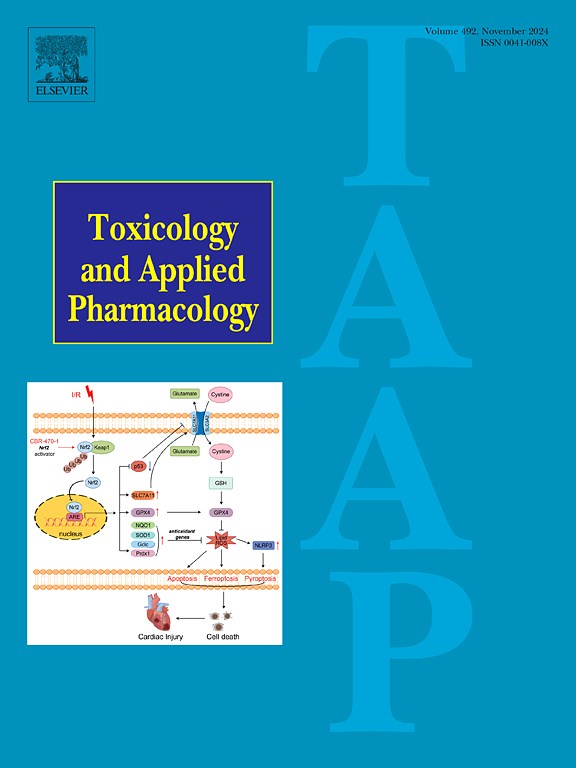β-Sitosterol protects against lithocholic acid-induced hepatotoxicity and cholestasis via farnesoid X receptor-mediated regulation of transporters and enzymes in vitro and in vivo
IF 3.3
3区 医学
Q2 PHARMACOLOGY & PHARMACY
引用次数: 0
Abstract
Cholestasis arises as a clinical syndrome triggered by the accumulation and aggregation of bile acids. Currently, there are only a few treatment options available for cholestasis. Therefore, it is necessary to explore novel therapeutic strategies. β-sitosterol (SIT), the phytosterol most abundantly found in plants, exhibits diverse pharmacological activities. This study examined SIT's protective role against hepatotoxicity and cholestasis induced by lithocholic acid (LCA). LCA was administered twice a day to male C57BL/6 mice for four days to cause hepatotoxicity and cholestasis. Assessment of the improvement in cholestasis following SIT treatment used H&E staining and serum biomarkers. Mice hepatocyte culture, real-time PCR, immunofluorescence staining, and Western blot were utilized to clarify the mechanisms of SIT hepatoprotection. Furthermore, molecular docking and dual-luciferase reporter gene analysis were utilized to show that SIT would activate the farnesoid X receptor (FXR). In vivo, SIT reduced bile acid accumulation by inducing the bile salt export pump (Bsep), multidrug resistance-related protein 2 (Mrp2), and reduced hepatic uptake of bile acids by inhibiting Na+/taurocholate co-transporting polypeptide (Ntcp), and cholesterol 7α-hydroxylase (Cyp7a1) and oxysterol 12α-hydroxylase (Cyp8b1) while in vitro, it restored FXR expression and transcriptional activity. Besides, SIT decreased hepatic inflammation by suppressing the inflammatory genes NF-κB p65 and p-NF-κB p65, TNF-α, IL-6, and IL-1β. However, the hepatoprotective effects of SIT were abolished by the FXR antagonist guggulsterone in vivo and FXR siRNA in vitro, confirming FXR-dependent mechanisms. In conclusion, SIT protects against LCA-induced hepatotoxicity and cholestasis via FXR activation. These findings highlight SIT as a promising therapeutic candidate for cholestasis.

求助全文
约1分钟内获得全文
求助全文
来源期刊
CiteScore
6.80
自引率
2.60%
发文量
309
审稿时长
32 days
期刊介绍:
Toxicology and Applied Pharmacology publishes original scientific research of relevance to animals or humans pertaining to the action of chemicals, drugs, or chemically-defined natural products.
Regular articles address mechanistic approaches to physiological, pharmacologic, biochemical, cellular, or molecular understanding of toxicologic/pathologic lesions and to methods used to describe these responses. Safety Science articles address outstanding state-of-the-art preclinical and human translational characterization of drug and chemical safety employing cutting-edge science. Highly significant Regulatory Safety Science articles will also be considered in this category. Papers concerned with alternatives to the use of experimental animals are encouraged.
Short articles report on high impact studies of broad interest to readers of TAAP that would benefit from rapid publication. These articles should contain no more than a combined total of four figures and tables. Authors should include in their cover letter the justification for consideration of their manuscript as a short article.

 求助内容:
求助内容: 应助结果提醒方式:
应助结果提醒方式:


